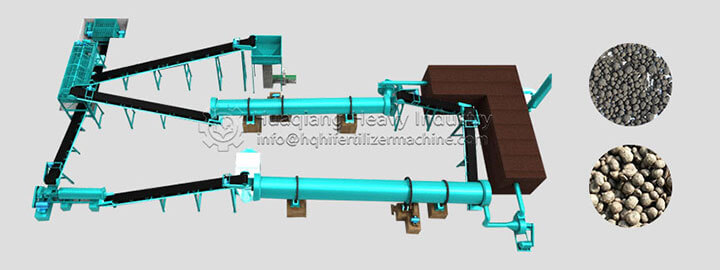Driven by the global wave of sustainable agriculture, bio-organic fertilizers, with their core advantages of soil improvement and pollution reduction, have become a key support for agricultural transformation, and the bio-organic fertilizer production line market is showing a trend of large-scale expansion. From an international perspective, the growth momentum of this market stems from the combined effects of policy guidance, demand upgrading, and technological innovation, with its scale and potential continuing to stand out.

The global market size is steadily increasing, with regional demands exhibiting distinct characteristics. Data shows that the global bio-organic fertilizer-related market size is expected to exceed US$15 billion by 2025, maintaining a compound annual growth rate of over 12%, with investment in bio-organic fertilizer production lines accounting for approximately 30%. Developed markets in Europe and the United States, with their strict environmental regulations and organic agriculture subsidies, have become the main demand areas for high-end production lines. The EU's subsidy policy of €120 per hectare directly drives the demand for production line upgrades. Emerging markets such as Southeast Asia and Africa are experiencing rapid growth, with the demand for low-cost production lines increasing by over 30% annually in the process of agricultural modernization. China's production capacity, with its cost advantage, has become the main source of supply.
Policy and demand are driving market expansion. Over 30 countries worldwide have introduced policies to support bio-organic fertilizers. The EU's EU2018/848 regulation has established a comprehensive supply chain management system, while USDA organic certification in the US is driving the standardization and upgrading of production lines. Consumer preference for organic food is translating into production, with global organic-certified arable land increasing by 6-7% annually. Production line penetration in cash crops such as fruits, vegetables, and tea has reached 45%. Simultaneously, fluctuations in chemical fertilizer prices and soil degradation are prompting farmers to accelerate their shift to bio-organic fertilizer production, further expanding the market for production lines.
Technological upgrades and trade circulation are activating growth potential. Technological innovations such as microbial agents and efficient fermentation are driving production line iterations, with high-end production lines possessing soil remediation and disease suppression functions commanding a 25-40% price premium. International market standards are gradually unifying, with standards such as China's NY525-2021 aligning with some indicators in Southeast Asia and Europe, lowering export barriers for production lines. Global organic fertilizer industry M&A transactions are projected to exceed $5 billion by 2025, with production line integration and capacity expansion becoming core directions.
From an international perspective, the bio-organic fertilizer production line market is in its growth stage. The technological upgrading needs of developed markets and the capacity building needs of emerging markets complement each other, and the global market space will continue to expand.